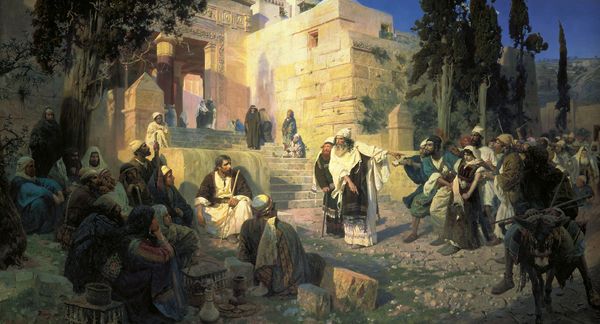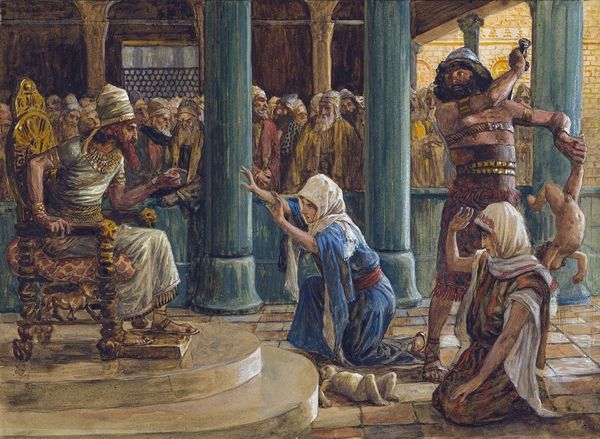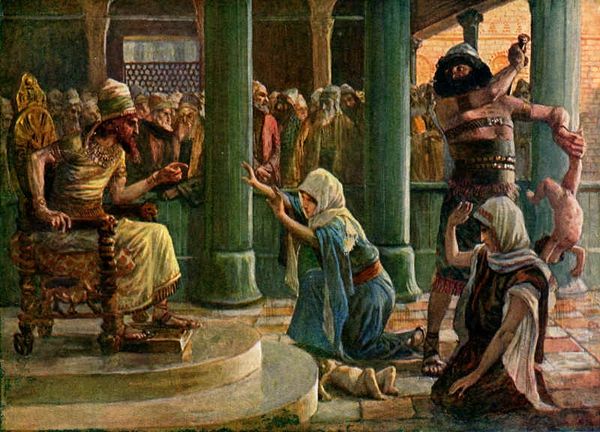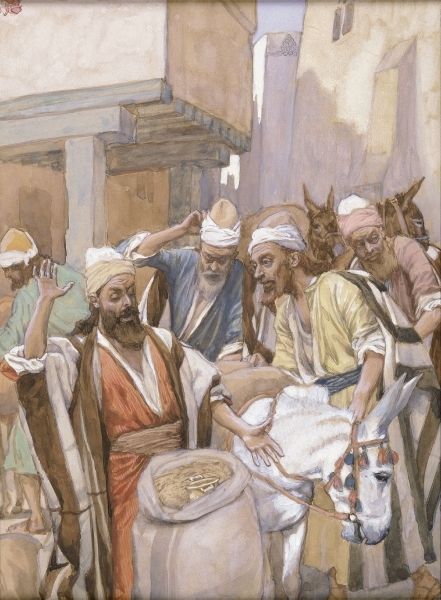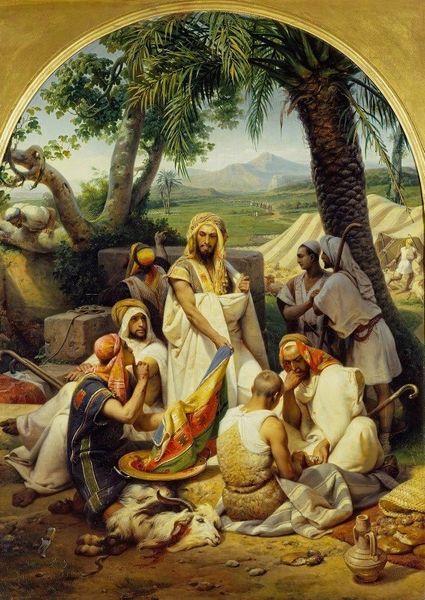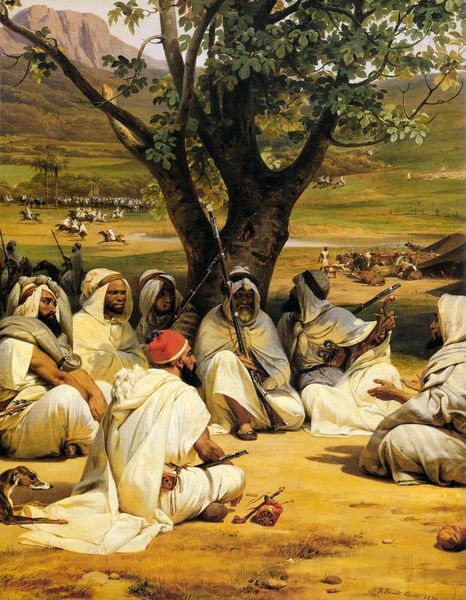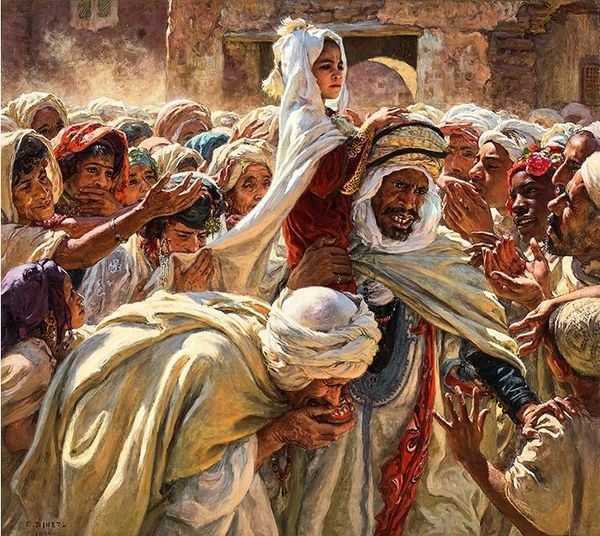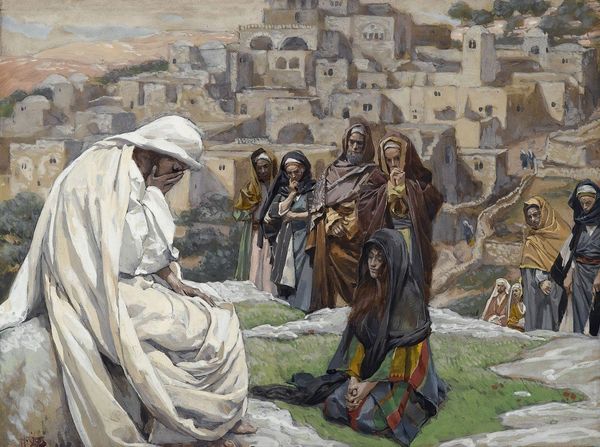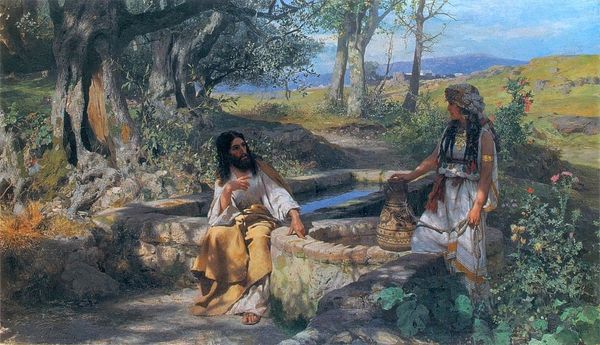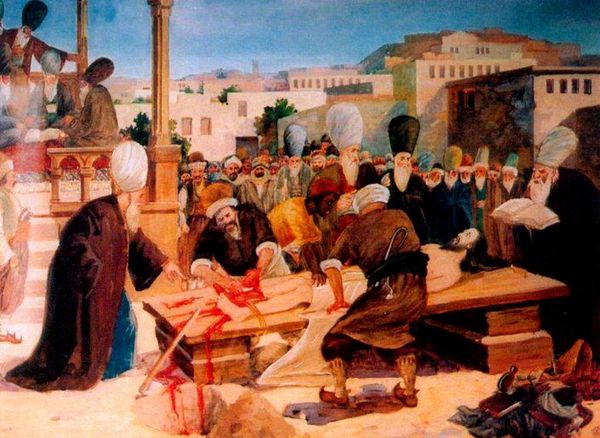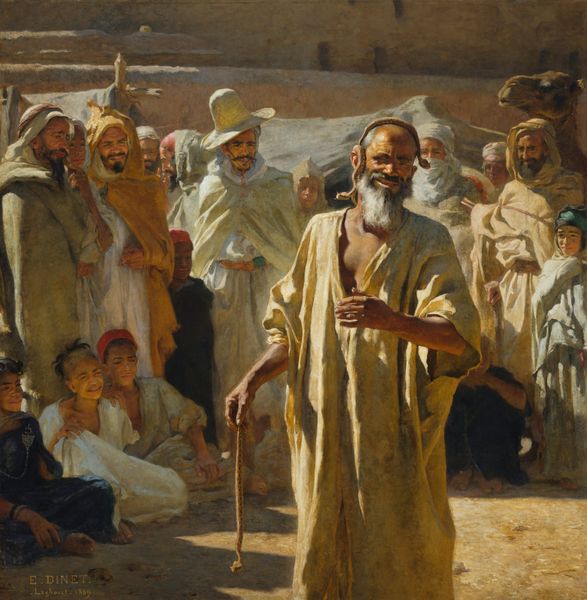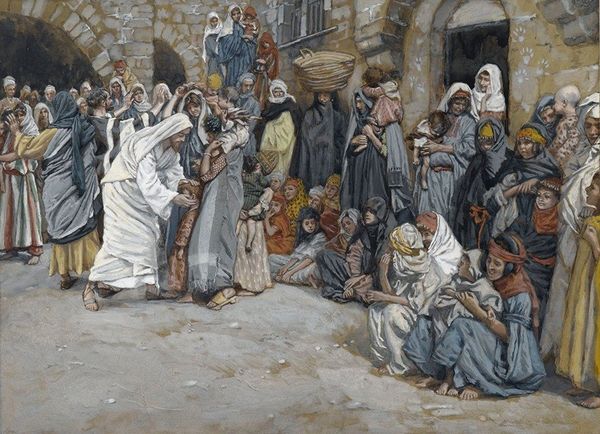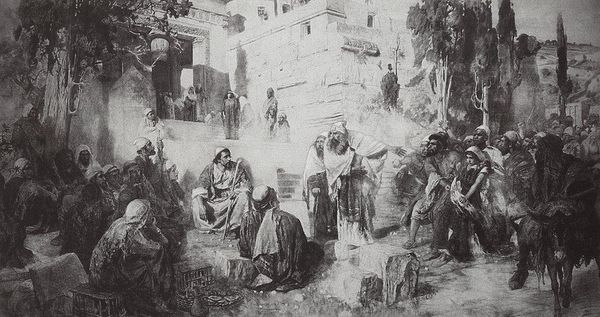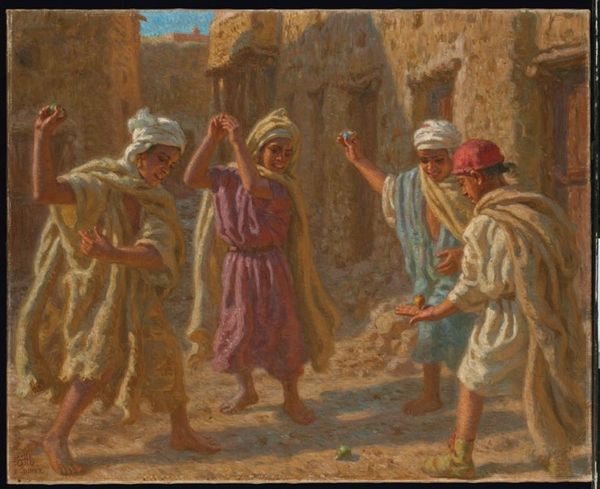
painting, oil-paint
#
portrait
#
byzantine-art
#
narrative-art
#
painting
#
oil-paint
#
oil painting
#
studio composition
#
jesus-christ
#
christianity
#
genre-painting
#
history-painting
#
academic-art
#
realism
#
christ
Copyright: Public domain
Curator: So here we have Vladimir Makovsky’s "Miracle at Cana," painted in 1887. What strikes you first about it? Editor: I'm immediately struck by the sense of… well, organized chaos. The figures are grouped in a way that suggests both reverence and a slightly uncomfortable closeness, like at any big social gathering, really. It's bright, maybe overly so, highlighting all the earth tones and giving a very everyday quality to an obviously momentous event. Curator: It's fascinating you say that because Makovsky, unlike some religious painters, roots this miracle squarely in the realm of genre painting—ordinary life. Note the arrangement; Christ isn’t the focal point in the classical sense. Rather, he's a participant among many, orchestrating almost subtly, surrounded by the mundane activity of servants pouring. Editor: Absolutely. The large jars especially draw my eye. We fill them with water—a symbol of purification, cleansing… It’s almost alchemical, the transformation from plain water to the vibrant, life-affirming symbol of wine, especially set against the earthly tones. Is it commentary? Makovsky’s gentle reminder of our own potential for metamorphosis? Curator: Intriguing point. Makovsky's realism tends to deflect overt didacticism, preferring social observation, if he pushes his painting into the world of Byzantine iconography for compositional techniques or visual symbols he would probably agree. There's a powerful cultural memory embedded in these narratives, so I don't see Makovsky shying away from any visual symbolism. Editor: Yes, absolutely, because isn’t it marvelous to consider how we use symbolism to give the ordinary a glow of importance, perhaps to create or sustain societal ideals and historical connections? After all, look at the detail around the vessels—the shoes left by the kneeling attendees! It underscores not just the miracle itself but a collective witnessing and a shared, very human, response to it. Curator: Agreed. By capturing that human response—the servant’s focus, the observer's curiosity—Makovsky avoids religious grandiosity and paints something accessible. He really made this event relatable; it is an actual happening, which is such a fresh point of view at this time in history! Editor: Which leaves us pondering how symbols continue to permeate art and human imagination. Makovsky lets viewers relate through a visual syntax we still read now. Curator: Well put. The piece acts as an incredible record.
Comments
No comments
Be the first to comment and join the conversation on the ultimate creative platform.
